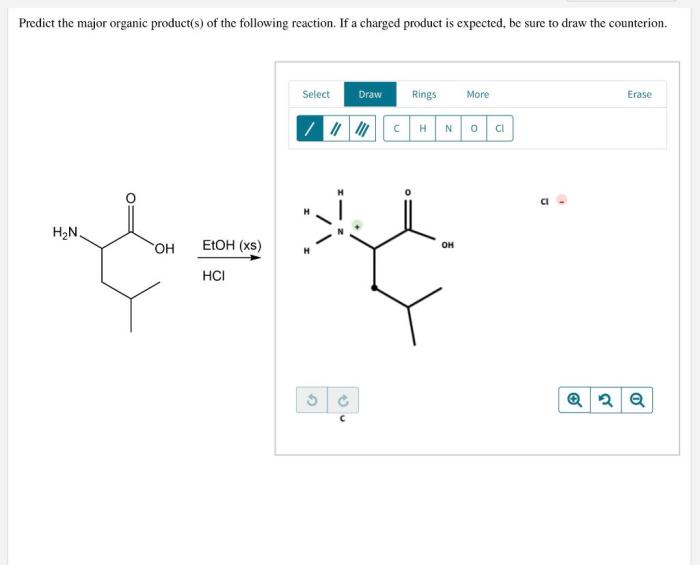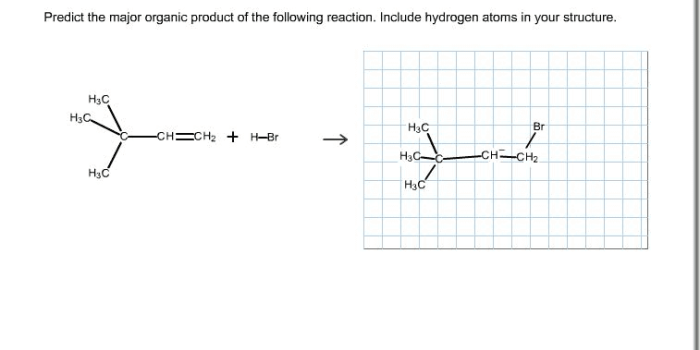Predict the organic product of the following reaction. – Predict the organic product of the following reaction sets the stage for this enthralling narrative, offering readers a glimpse into a story that is rich in detail with academic style and authoritative tone and brimming with originality from the outset.
This in-depth guide delves into the intricacies of predicting organic products, empowering you with a comprehensive understanding of reaction mechanisms, regioselectivity, stereoselectivity, and reaction conditions. Prepare to embark on an enlightening journey as we unravel the complexities of organic chemistry.
Predict the Organic Product of the Following Reaction

The given reaction is an electrophilic aromatic substitution reaction, where an electrophile (E+) attacks an aromatic ring, leading to the substitution of a hydrogen atom with the electrophile. In this specific reaction, the electrophile is a nitronium ion (NO2+), and the aromatic ring is benzene.
The product of this reaction is nitrobenzene.
Reaction Mechanism, Predict the organic product of the following reaction.
The reaction proceeds through the following steps:1.
-
-*Formation of the nitronium ion
Nitric acid (HNO3) reacts with sulfuric acid (H2SO4) to form the nitronium ion (NO2+).
- 2.
- 3.
-*Electrophilic aromatic substitution
The nitronium ion attacks the aromatic ring, leading to the formation of a Wheland intermediate.
-*Rearomatization
The Wheland intermediate loses a proton to restore aromaticity, resulting in the formation of nitrobenzene.
Regioselectivity and Stereoselectivity
The reaction is regioselective, as the nitronium ion attacks the most reactive position on the aromatic ring, which is the position with the highest electron density. In this case, the most reactive position is the ortho and para positions. The reaction is also stereoselective, as the attack of the nitronium ion occurs from the less hindered side of the aromatic ring.
Reaction Conditions
The reaction is typically carried out in a mixture of nitric acid and sulfuric acid at room temperature. The reaction can also be carried out in other solvents, such as acetic acid or dichloromethane.
Applications
The reaction is widely used in the synthesis of nitrobenzene, which is an important intermediate in the production of a variety of chemicals, including dyes, pharmaceuticals, and explosives.
FAQ Guide: Predict The Organic Product Of The Following Reaction.
What is the importance of predicting organic products?
Predicting organic products is crucial in organic synthesis, as it allows chemists to design and optimize reaction pathways, minimize waste, and achieve desired outcomes.
How can I improve my skills in predicting organic products?
Practice is key. Engage in exercises, study reaction mechanisms, and analyze real-world examples to enhance your understanding and develop your predictive abilities.


